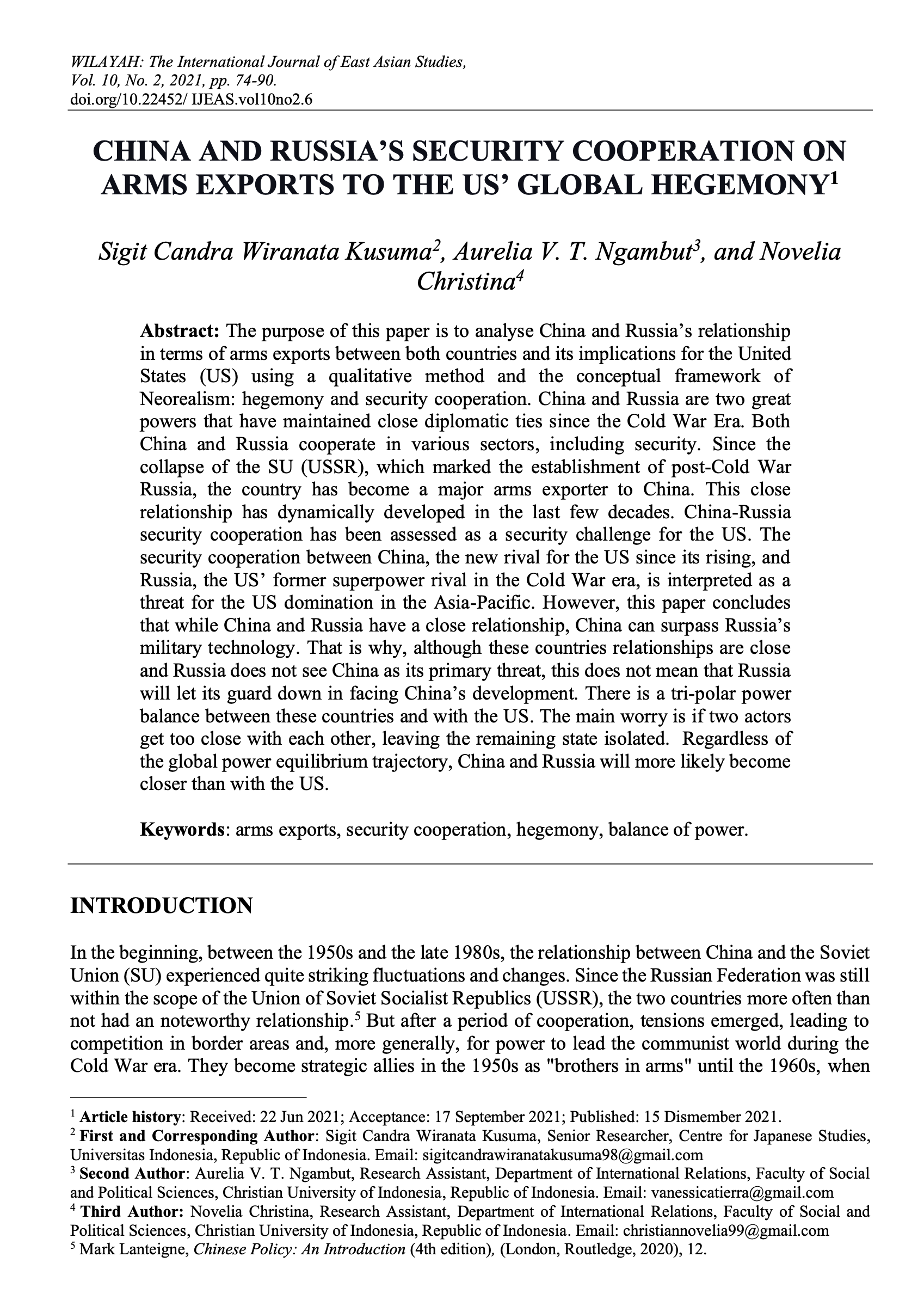China and Russia Security Cooperation on Arms Exports Toward the US’ Global Hegemony
Main Article Content
Abstract
Abstract: The purpose of this paper is to analyse China and Russia’s relationship in terms of arms exports between both countries and its implications for the United States (US) using a qualitative method and the conceptual framework of Neorealism: hegemony and security cooperation. China and Russia are two great powers that have maintained close diplomatic ties since the Cold War Era. Both China and Russia cooperate in various sectors, including security. Since the collapse of the SU (USSR), which marked the establishment of post-Cold War Russia, the country has become a major arms exporter to China. This close relationship has dynamically developed in the last few decades. China-Russia security cooperation has been assessed as a security challenge for the US. The security cooperation between China, the new rival for the US since its rising, and Russia, the US’ former superpower rival in the Cold War era, is interpreted as a threat to US domination in the Asia-Pacific. However, this paper concludes that while China and Russia have a close relationship, China can surpass Russia’s military technology. That is why, although these countries relationships are close and Russia does not see China as its primary threat, this does not mean that Russia will let its guard down in facing China’s development. There is a tri-polar power balance between these countries and with the US. The main worry is if two actors get too close, leaving the remaining state isolated. Regardless of the global power equilibrium trajectory, China and Russia will become more closed than the US.
Downloads
Article Details

This work is licensed under a Creative Commons Attribution-NonCommercial 4.0 International License.
Copyright
Submission of a manuscript to the WILAYAH implies that the submitted work has not been published before (except as part of a thesis or report or abstract), that it is not under consideration for publication elsewhere; that all co-authors have approved its publication. The WILAYAH : International Journal of East Asian Studies adopts CC BY license. As such, we would be grateful if an acknowledgement accompanies the republication that the work was originally published in WILAYAH. The editors will ensure digital preservation of access to the journal content by the Journal depository section.
Disclaimer
Although the Department of East Asian Studies is the publisher of the WILAYAH : International Journal of East Asian Studies, the views presented in the WILAYAH are entirely those of the contributors and do not reflect the official stand of the Department of East Asian Studies. The Department does not hold itself responsible for the accuracy of any article published. Publisher and co-publishers assume no responsibility, nor by the editors for any injury and/or damage to persons or property as a result of any actual or alleged libellous statements, infringement of intellectual property or privacy rights, or products liability, whether resulting from negligence or otherwise, or from any use or operation of any ideas, instructions, procedures, products or methods contained in the material therein.

